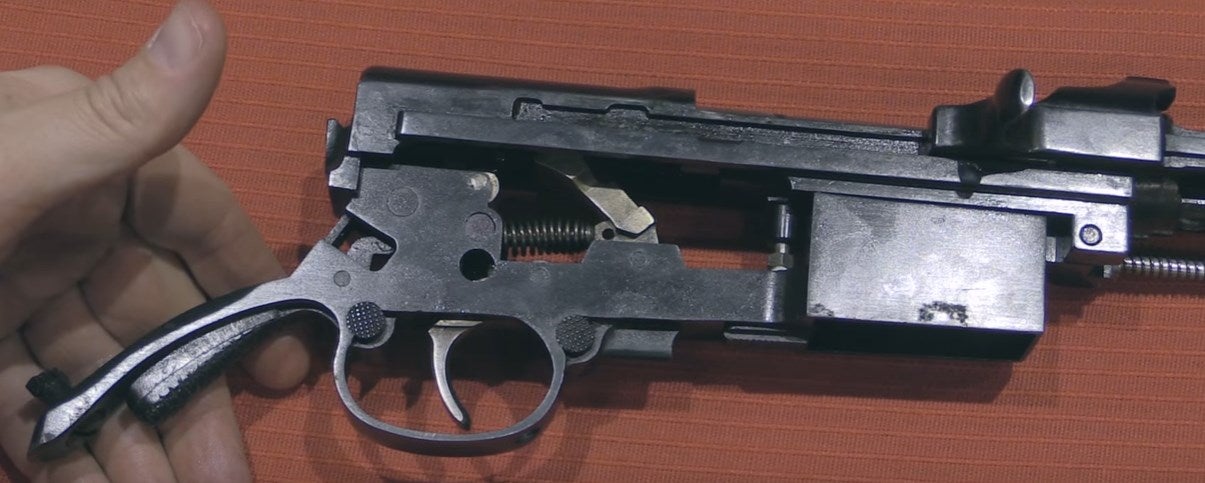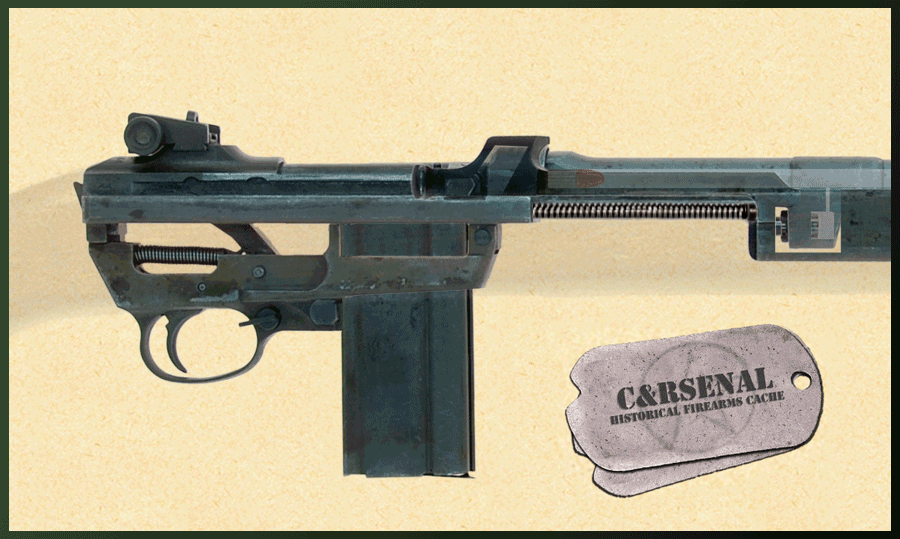Month: August 2022
12GA Birdshot – SPINNER CHALLENGE
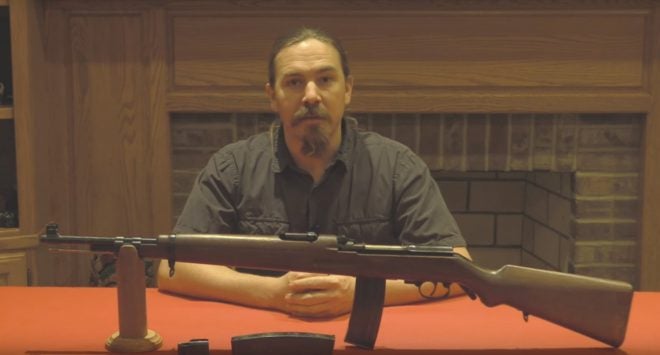
The M1 Carbine is a lightweight, handy weapon that is well-liked by many. One of its weakest points for many people, however, is its cartridge: The .30 Carbine caliber is regarded by some as being too weak to be a true intermediate caliber round fully capable of effective 300m fire.
Still, the .30 Carbine is short, so maybe there is another caliber out there that could fit into an M1 Carbine’s action while giving it a little more punch… It turns out that during the late 1940s and early 1950s, at least one Spanish small arms designer felt the same way, and invented the gun in the Forgotten Weapons video below:
Ian does something a little odd in the video when he identifies the rifle as being “heavily influenced by the M1 Garand”, and continues to repeat that idea several times in the video. He’s not entirely wrong, but… To my eye the rifle looks much more obviously derived from the M1 Carbine, not the M1 (Garand) Rifle.
There are a couple of clues to this: The general style of the action (mechanically similar to both rifles, but aesthetically much more M1 Carbine than Garand), the fire control group, and the mass on the operating rod. Interestingly, in lieu of the tappet gas system, the Mosqueton CB-51 uses a fixed piston with many turbulence-generating rings, that looks inspired by the StG-44.
You can see how similar the Mosqueton is to the M1 Carbine below:
Calling this rifle an M1 Carbine copy isn’t quite doing it justice, honestly (although it makes for a very snappy title). The rifle isn’t in truth a direct clone of anything, although it does seem to take more from the M1 Carbine than anything else. Besides the different gas system, the rifle features an odd grip safety, and a very German-looking front end, as well as stripper clip guides!
It’s worth noting that while this rifle is called “CB-51”, it’s not the only rifle called CB-51. It seems to me that maybe “CB-51” was the name of a trial or a program to which these different weapons were submitted, although that’s only speculation on my part.
Minute of Mae: Winchester 1892
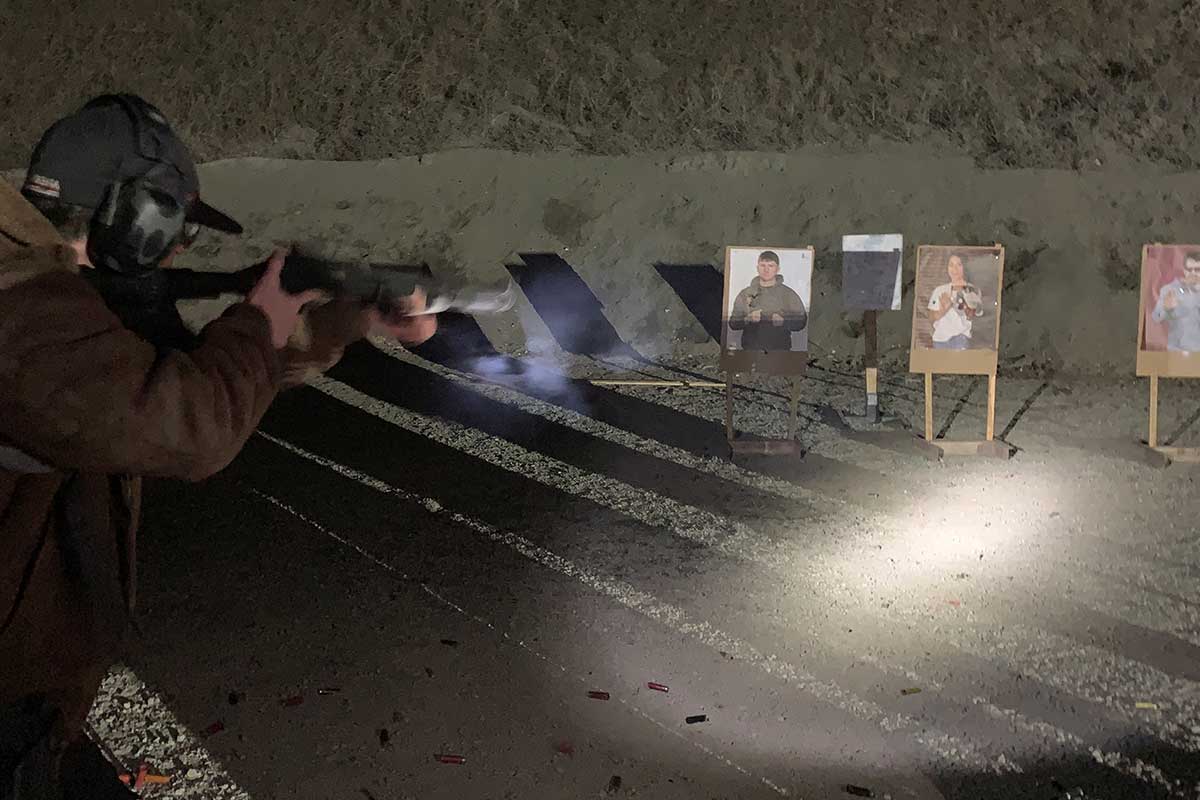
Rule #4 reads, “Be Sure of your target and what’s beyond it.” That’s easy on a square range with a two-dimensional target in front of a tall earthen berm. Too easy. Maybe you are moving. Far more often, the target is not moving; it is just static. And there is generally a lack of No Shoots downrange behind the targets we are shooting. As a result, there is not much opportunity to practice Rule #4 and the downrange problem.
If your instructor adds in “… and what is between you and the target as well as around it” that makes the downrange problem even more difficult.
How big of an issue is this downrange problem? How concerned do we, as armed professionals and armed citizens, need to be about this?
As groups, armed professionals and citizens have unfortunately shot uninvolved or non-hostile individuals, wounding or killing them with rounds that missed those whose actions justified deadly force. Those killed have included victims, bystanders, and uniformed, on-duty police officers.
This is an issue, and we need to be concerned about it.
This past weekend was Tom Givens’ yearly Rangemaster Tactical Conference, also known as TacCon, at the Dallas Pistol Club in Carrollton, Texas.
Numerous presenters gave classroom and live-fire presentations on a broad spectrum of topics for the self-defense community. I was fortunate to have been invited to be a presenter. One of my classroom presentations was based on several research studies, including Tom Aveni’s 2008 work for the Police Policy Studies Council, titled “Critical Analysis of Police Shootings Under Ambiguous Circumstances. Numerous officers from six different agencies participated in the study that focused on decision-making driven by suspect behaviors. Each officer had multiple scenarios for the study.
A problematic finding in the study had to do with a mugging scenario that involved victims who were farther downrange than the suspects. The victim was positioned in the officer’s line of fire when the suspect drew on and then shot at the officers. Most officers in the study – though not all – returned fire at the suspect when shot at. Many of those officers had one or more rounds hit the downrange victim or bystander.
Unfortunately, the study only uses the words” most” and “many” as it did not capture the numbers of victims and bystanders that were hit.
While there are other lessons from that study, the downrange problem is one that trainers and instructors need to be aware of and address.
One large west coast agency has experienced a couple of these events in the last few years. These were cases where the suspects’ violent actions created the situations that led to the tragic outcome. Even though COVID has adversely impacted a lot of training over the past couple of years, it will not give us a pass.
What are some different ways of doing this?
Including bystanders and victims near or behind the suspects during force-on-force scenarios is one idea. Program the problem into the firearms training simulators like those from FATS and VirTra.
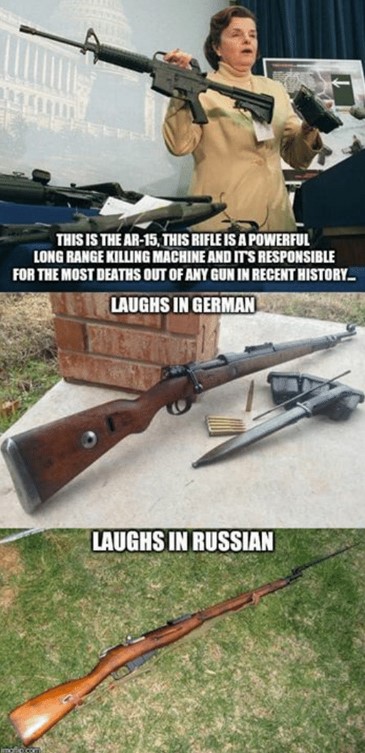

Smith & Wesson CEO Mark Smith was fed up. He was running the largest firearms manufacturer in America, based in Springfield, Mass., where it had been making weapons since 1860, and yet state lawmakers were considering a bill to ban the manufacture of AR-15-style rifles for the civilian market. The proposed law would cripple Smith’s company. Sixty percent of Smith & Wesson’s revenue came from AR-15-style guns.
So after years of flirting with the idea, Smith announced last September that Smith & Wesson was pulling up stakes and moving its headquarters from Massachusetts to Tennessee.
Deciding to leave was “extremely difficult,” Smith told investors, but “we feel that we have been left with no other alternative.”
At least 20 firearms, ammunition and gun accessory companies — including some of the industry’s biggest names, such as Beretta and Remington Arms — have moved headquarters or shifted production from traditionally Democratic blue states to Republican red ones over the past decade, relocating thousands of jobs and hundreds of millions of dollars in investment amid the nation’s sharpening divide over guns. The companies were enticed by tax breaks and the promise of cheaper labor. But the biggest factor often was the push for stricter gun laws in many of the Democratic-leaning states.
“They’re going where they’re wanted,” said John Harris, a Nashville attorney and executive director of the Tennessee Firearms Association.
The result is a firearms industry that is increasingly rooted in the South and, to a lesser extent, the West, weakening ties to the Northeast that stretch back to the Revolutionary War. The dramatic shift illustrates the economic fallout from political polarization among the states, where laws and attitudes are increasingly diverging on hot-button cultural issues, including abortion rights. It also reveals a growing frustration among some left-leaning lawmakers with a homegrown industry that they see as unwilling to even discuss gun violence.
“This is where we part ways,” said Massachusetts state Rep. Bud Williams (D), whose district includes Smith & Wesson’s historic headquarters. “And I’ve been a big supporter of Smith & Wesson. But there’s too many mass shootings. I’m not going to be silent.”
The departures have come in waves, often prompted by legislative reactions to high-profile mass shootings — first the 2012 school shooting in Newtown Conn., and then the 2018 school shooting in Parkland, Fla. Some states run by Democrats tightened gun laws. Republican states often moved in the opposite direction, sometimes loosening gun restrictions in the wake of mass shootings, studies show.
New gun laws led Beretta USA to move its manufacturing operations from Maryland for Tennessee in 2014. Mossberg shipped its shotgun production from Connecticut to Texas that same year. That’s also when Magpul Industries, among the country’s largest producers of ammunition magazines, left Colorado for Texas and Wyoming.
In 2019, Stag Arms trumpeted its departure of Connecticut for Wyoming.
The next year, gunmaker Kimber Manufacturing fled New York for Alabama.
Last November, two months after Smith & Wesson’s farewell, the owner of Remington Arms, the nation’s oldest gunmaker, revealed it was moving its headquarters from Ilion, N.Y. to LaGrange, Ga., pledging to invest $100 million and hire 856 people in its new home.
“We are very excited to come to Georgia, a state that not only welcomes business but enthusiastically supports and welcomes companies in the firearms industry,” Ken D’Arcy, CEO of Roundhill Group, which owns RemArms, said in a statement. His company bought the Remington rifle brand and several others from Remington Outdoor in a bankruptcy sale.
Companies made more than $1B selling powerful guns to civilians, report says
Republican lawmakers have encouraged gun companies to move and looked to lure them to their own states, viewing it as an opportunity to add jobs and burnish culture war credentials.
Last year, Oklahoma lawmakers launched a study of ways to attract gunmakers to the Sooner state. At the 2022 Shot Show, the firearms industry’s major annual trade show, governors from six states traveled to Las Vegas to sell their communities to the manufacturers of guns, ammunition and accessories. All of them were Republicans.
“These states are openly attracting the industry. Some of them have been very aggressive,” said Mark Oliva, spokesman for the National Shooting Sports Foundation, a trade group based — as it has been for decades — in Newtown, Conn.
The pitch isn’t only about being a safe haven for gun rights. State officials also dangle economic incentives.
Georgia offered $28 million in grants and tax breaks to Remington for its new headquarters. Wyoming gave at least $8 million in grants to Magpul for its relocation. And Smith & Wesson got a big break on property taxes, along with a $9 million grant. Smith & Wesson’s move is expected to boost the company’s earnings per share by about 10 cents a share annually, according to financial disclosures.
“Whatever motivation they have about guns, they’re also motivated by dollars,” Harris, of the Tennessee firearms group, said of the gun companies.
Remington, Smith & Wesson, Magpul, Stag Arms and Kimber did not respond to a request for comment. Beretta declined to comment. Tennessee economic development officials also declined to comment.
The firearms industry is not a huge part of the overall U.S. economy, but it carries symbolic weight. Guns sit at the center of some of the country’s fiercest cultural fights, such as the reach of constitutional rights and worries about crime and violence.
CEO of gunmaker Smith & Wesson blames politicians for gun violence
These days, the firearms industry is growing rapidly, shaking off years of tepid sales during President Donald Trump’s term. (Gun sales tend to spike under Democratic presidents, when the potential for new gun laws seems greater.)
Americans bought an estimated 19.9 million firearms last year — the second most ever, right behind 2020′s pandemic-fueled record tally of nearly 23 million, according to Small Arms Analytics and Forecasting. Employment at firearms and ammunition companies jumped 28 percent from 2015 to 2021, totaling nearly 170,000 people nationwide, according to NSSF data.
The NSSF and the National Rifle Association have cheered on the gunmakers’ caravan of moving vans, attributing the trend to “anti-Second Amendment sentiment” and a search for friendlier states. An NRA journal called America’s First Freedom described the shift as, “Moving to Freer America.”
But most gunmakers are not abandoning blue states entirely.
Beretta USA, subsidiary of Italian gunmaker Beretta, moved 160 jobs from Prince George’s County’s Accokeek, Md., to Gallatin, Tenn., after Maryland lawmakers in 2014 banned dozens of assault-style weapons, including some made by Beretta.
“Why expand in a place where the people who built the gun couldn’t buy it?” Jeffrey Reh, general counsel for Beretta, said to The Washington Post while the state was debating the gun ban.
The bill passed, and Beretta moved. Its $45 million gun plant in Tennessee now employs about 300 people. And while Beretta’s production and research and development teams work there, the gunmaker’s executives and administrative staff — about 100 people — stayed in Maryland.
A recent search of online job ads showed Beretta had nine openings in Tennessee and five in Maryland.
A city that makes guns confronts its role in the Parkland mass shooting
Smith & Wesson plans to keep 1,000 jobs in Massachusetts even after it moves 550 positions, plus another 200 jobs from around the country, and its headquarters to Tennessee, which is expected to be completed next year.
But the loss has been a blow to Springfield.
The city of 155,000 people is located in the Connecticut River Valley, a region once so stocked with firearms manufacturers that it was known as Gun Valley. Springfield was its unofficial capital, the place where George Washington decided to locate the nation’s first armory. Gun making has long been woven into the city’s story.
Smith & Wesson was among the city’s top employers. It donated to local charities and helped sponsor the annual holiday lights display.
“It’s a pretty significant impact,” Timothy Sheehan, the city’s chief development officer, said of the gunmaker’s departure.
Despite the shared history, the relationship between the company and the city had grown strained recently.
The headquarters and its factory gates were the frequent staging ground for protests. Students and religious groups have picketed outside several times since the 2018 Parkland shooting, when a gunman used a Smith & Wesson AR-15-style rifle to kill 17 students and staff.
Last year, the father of a teen killed in that shooting designed a highway billboard that overlooked the firearms plant. It carried the message: “I can’t turn 21 and enjoy my first legal beer because a Florida teen was allowed to get his first legal AR-15.”
Smith & Wesson has responding by digging in and balking at the suggestion it shares responsibility for how its guns are used. This summer, Smith, the chief executive, refused to join executives from other weapons makers when they testified before a House Oversight Committee looking into the firearms industry. He then issued a statement blaming politicians for gun-related crimes and accused them of trying to shift culpability.
The company used to be more willing to talk about ways it could help reduce gun violence.
In 2000, a year after the school mass shooting in Columbine, Colo., President Bill Clinton’s White House and Smith & Wesson announced a legal settlement that included the gunmaker agreeing to install child-safe triggers and to ban sales to gun dealers with checkered pasts. Other gunmakers considered joining the deal. But facing intense pressure from the NRA and the gun industry, Smith & Wesson eventually backed away from the deal. Its chief executive resigned.
The deal was scrapped.
Massachusetts went on to pass some of the strictest gun laws in the country. Long before the gunmaker’s move to Tennessee, it was illegal for Smith & Wesson to sell its AR-15-style rifles to civilians in its home state.
Last year’s proposed state bill would’ve gone even further and outlawed the manufacture of those rifles.
Sheehan, the city’s chief development officer, said he understood the difficult position that the company was in.
“I can also understand the point — the social point — that the legislation was driving at,” Sheehan said.
“But, in my mind,” he said, “you also need to weigh that with the economic impact.”
The bill didn’t pass.
But Smith & Wesson is not coming back.
Williams, the Springfield representative, was among the bill’s co-sponsors.
He knew what it could do to a company in his own backyard.
And he’d once been a big supporter of Smith & Wesson. It was the kind of place where a local kid could land a good job right out of high school and stay a lifetime. As a city councilman, he’d helped push for the company to get property tax cuts. He’d encouraged police departments to buy Smith & Wesson weapons.
But Williams increasingly took note of the toll of gun violence. It wasn’t just the mass shootings. There were the many smaller shootings that seemed to barely make the news.
Smith & Wesson refused to talk about any of it, he said.
He’d seen enough. It was too much. It didn’t matter anymore to him that this was a hometown company.
“I just felt that with all these shootings,” Williams said, “at some point it’s time to put lives over profit.”
Smith & Wesson is expected to open its headquarters down South next year.
Its new home is in a Tennessee county that a couple of years ago declared itself a Second Amendment “sanctuary,” where local leaders vowed to fight against gun control.
